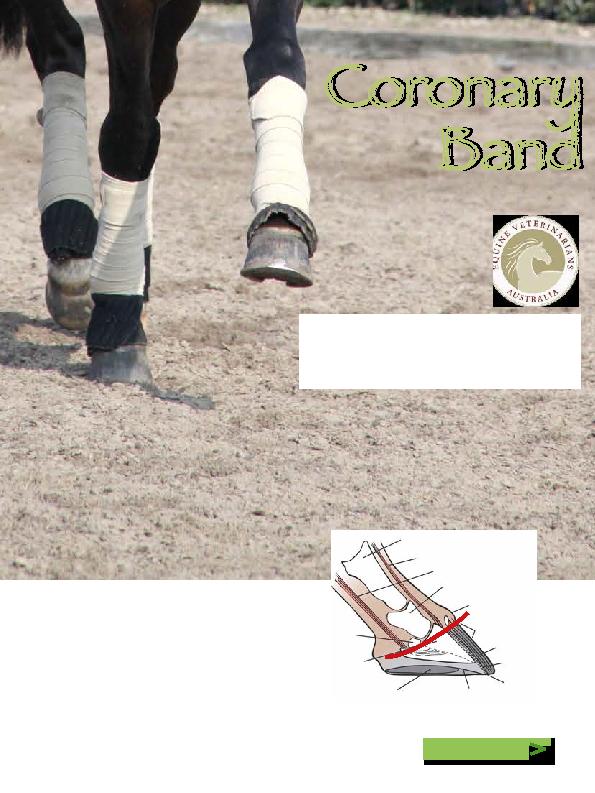
H
orses are prone to injuring themselves in a
variety of different ways, with varying degrees
of severity. The limb appears to be a part of the
equine anatomy that is commonly injured and as the hoof
is at the end of the limb it can be subjected to damaging
circumstances. Wounds in the horse, particularly of the
lower limb, can be difficult and time consuming to treat,
which can be especially true for injuries of the coronary
band and hoof capsule. Essentially an extension of the
skin, the hoof heals in a very similar fashion, however
with a few important differences.
THe Four PHases oF Healing
Inflammation: This is characterised by pain, heat,
swelling and redness. As the hoof is a rigid structure,
there is little room to accommodate swelling.
Debridement: Removal of dead and contaminated
tissue from wounds to allow for drainage is necessary,
however as there is no area to drain debridement is
difficult in the hoof capsule.
byDrLukeWells-Smith
BVSc
Equine Veterinarians
Australia ( EVA)
Continued
Photo by Liz
T
ollarzo
While injuries to the coronary band range
in severity, prompt attention may prevent
any ongoing issues with lameness.
Long pastern bone
Extensor tendon
Flexor tendon
Short pastern bone
CORONaRy
BaND
Periople/Stratum tectorum
Hoof wall
Laminae
White line
Sole
Frog
Coffin bone
Navicular bone
Coronary
Band
injuries
Coronary
Band

